The Maryland State Bar Association, Construction Law Section recently published a Synopsis of Construction Related Bills in the 2014 Session of the Maryland General Assembly (through February 28, 2014), including, for example, bills on the licensing and regulation of electricians, solar farms construction requirements, and introducing the Prevailing Wage Rates Reform Act of 2014. Among other things, the Synopsis includes links to the bills.
The Synopsis identifies the following House Bills:
- H.B. 5 (pre-filed Nov. 17, 2013) — State Board of Plumbing – Continuing Professional Competency – Master Plumbers and Master Natural Gas Fitters
- H.B. 6 (pre-filed Nov. 17, 2013) — Maryland Home Improvement Commission – Guaranty Fund – Claims
- H.B. 10 (pre-filed Sep. 19, 2013) — Real Property – Regulation of Common Ownership Community Managers
- H.B. 14 (pre-filed Nov. 8, 2013) — Small Business Reserve Program – Procurements by Designated Procurement Units
- H.B. 15 (pre-filed Oct. 1, 2013) — Public School Facilities Security Improvements Program
- H.B. 69 (pre-filed Jul. 23, 2013) — Procurement – State Funds – Energy Efficient Outdoor Lighting Fixtures
- H.B. 207 (filed Jan. 16, 2014) — State Capital Projects – High Performance Buildings
- H.B. 213 (filed Jan. 16, 2014) — Local Government – Permit Review and Explanation of Denial
- H.B. 259 (filed Jan. 20, 2014) — Condominiums – Warranty Claims
- H.B. 314 (filed Jan. 22, 2014) — Baltimore City – Property Tax Credit – Newly Constructed Dwellings
- H.B. 361 (filed Jan. 23, 2014) — State Plumbing Code – Adoption of International Code Council Standards
- H.B. 412 (filed Jan. 24, 2014) — Real Property – Condominiums and Homeowners Associations – Disclosures to Purchasers on Resale of Unit or Lot – Limitation on Fees
- H.B. 510 (filed Jan. 29, 2014) — Sustainable Communities Tax Credit Program – Extension and Alteration
- H.B. 547 (filed Jan. 29, 2014) — Minority Business Enterprises – Study and Report
- H.B. 548 (filed Jan. 29, 2014) — Condominium Boards of Directors – Membership – Prohibition on Married Couples
- H.B. 553 (filed Jan. 29, 2014) — Housing – Energy-Efficient Homes Construction Loan Program
- H.B. 602 (filed Jan. 30, 2014) — Real Property – Common Ownership Communities – Foreclosure of Liens
- H.B. 632 (filed Jan. 30, 2014) — Procurement – Maryland Funding Accountability and Transparency Act – Revisions
- H.B. 634 (filed Jan. 30, 2014) — Transportation – Capital Projects – Life-Cycle Cost Analysis
- H.B. 727 (filed Jan. 31, 2014) — Procurement – Prevailing Wage – Applicability
- H.B. 796 (filed Feb. 3, 2014) — Procurement – Debarment – Violations of Law
- H.B. 878 (filed Feb. 5, 2014) — State Highway Administration – Compost and Compost-Based Products – Specification
- H.B. 911 (filed Feb. 5, 2014) — Public Safety – Highway Work Zones – Off-Duty Law Enforcement Officers Required
- H.B. 947 (filed Feb. 5, 2014) — Public Safety – Building Codes – Balcony Inspections (Jonathan’s Law)
- H.B. 951 (filed Feb. 5, 2014) — Procurement – Occupational Safety and Health Prequalification
- H.B. 956 (filed Feb. 6, 2014) — Prevailing Wage Enforcement Act
- H.B. 980 (filed Feb. 6, 2014) — Transportation – Roadway Near High Voltage Electric Transmission Line in Prince George’s County – Limitation PG 407-14
- H.B. 1038 (filed Feb. 6, 2014) — Real Property – Requirements for New Home Sales Contracts – Clarification of Terms
- H.B. 1080 (filed Feb. 6, 2014) — Condominiums and Homeowners Associations – Sales – Disclosure and Cancellation Requirements
- H.B. 1119 (filed Feb. 7, 2014) — Board of Electricians – Licensing and Regulation of Electricians – Phase Out of Local Licenses
- H.B. 1220 (filed Feb. 7, 2014) — Procurement – Real Estate Development Projects – Minority Business Enterprise Participation
- H.B. 1223 (filed Feb. 7, 2014) — Task Force to Study the Establishment of a Local Preference Procurement Program
- H.B. 1315 (filed Feb. 7, 2014) — Minority Business Participation – Liquidated Damages Provisions – Exclusion for Architectural and Engineering Services Contracts
- H.B. 1329 (filed Feb. 7, 2014) — Baltimore County Board of Education – Procurement for Construction-Related Projects for Schools
- H.B. 1338 (filed Feb. 7, 2014) — State Construction Projects – Work-Based Learning and Local Hiring
- H.B. 1451 (filed Feb. 18, 2014) — Environment – Marine Contractor Services – License Exceptions
- H.B. 1463 (filed Feb. 19, 2014) — Solar Farms – Construction Requirements – Exemptions
- H.B. 1488 (filed Feb. 24, 2014) — State Procurement – Source Selection and Protest Appeals Procedures – Revisions
The Synopsis further identifies the following Senate Bills:
- S.B. 45 (pre-filed Nov. 15, 2013) — Architects, Landscape Architects, and Professional Land Surveyors – Firm Permits
- S.B. 54 (pre-filed Nov. 15, 2013) — Labor and Employment – Maryland Apprenticeship and Training Council
- S.B. 185 (filed Jan. 15, 2014) — Transportation – Capital Projects – Life-Cycle Cost Analysis
- S.B. 204 (filed Jan. 16, 2014) — Prevailing Wage Rates Reform Act of 2014
- S.B. 207 (filed Jan. 16, 2014) — Condominiums – Warranty Claims
- S.B. 229 (filed Jan. 16, 2014) — Real Property – Condominiums and Homeowners Associations – Disclosures to Purchasers on Resale of Unit or Lot – Limitation on Fees
- S.B. 232 (filed Jan. 16, 2014) — Procurement – Prevailing Wage – Applicability
- S.B. 267 (filed Jan. 17, 2014) — Baltimore City – Property Tax Credit – Newly Constructed Dwellings
- S.B. 274 (filed Jan. 17, 2014) — Business Occupations – Common Ownership Community Managers – Registration
- S.B. 401 (filed Jan. 23, 2014) — Public Safety – Building Codes – Balcony Inspections (Jonathan’s Law)
- S.B. 470 (filed Jan. 27, 2014) — Public School Facilities Security Improvements Program
- S.B. 484 (filed Jan. 27, 2014) — Procurement – Maryland Funding Accountability and Transparency Act – Revisions
- S.B. 573 (filed Jan. 30, 2014) — Real Property – Condominiums – Appointment of Receiver
- S.B. 655 (filed Jan. 31, 2014) — Real Property – Requirements for New Home Sales Contracts – Clarification of Terms
- S.B. 669 (filed Jan. 31, 2014) — Procurement – Debarment – Violations of Law
- S.B. 672 (filed Jan. 31, 2014) — Condominium Boards of Directors – Membership – Prohibition on Married Couples
- S.B. 677 (filed Jan. 31, 2014) — Public Safety – Highway Work Zones – Off-Duty Law Enforcement Officers Required
- S.B. 774 (filed Jan. 31, 2014) — Procurement – Occupational Safety and Health Prequalification
- S.B. 820 (filed Jan. 31, 2014) — Condominiums and Homeowners Associations – Sales – Disclosure and Cancellation Requirements
- S.B. 851 (filed Jan. 31, 2014) — Maryland Insurance Administration – Individual Sureties – Regulation
- S.B. 877 (filed Jan. 31, 2014) — Board of Electricians – Licensing and Regulation of Electricians – Phase Out of Local Licenses
- S.B. 970 (filed Feb. 7, 2014) — Task Force to Study the Establishment of a Local Preference Procurement Program
- S.B. 1020 (filed Feb. 13, 2014) — Solar Farms – Construction Requirements – Exemptions
- S.B. 1029 (filed Feb. 13, 2014) — Baltimore County Board of Education – Procurement for Construction-Related Projects for Schools
- S.B. 1053 (filed Feb. 19, 2014) — Maryland Building Performance Standards – Energy Codes – Local Authority
- S.B. 1068 (filed Feb. 21, 2014) — Increasing to 75% or more the percentage of State money that must be used in an elementary or a secondary school construction project before the Prevailing Wage Law applies; etc.
Additional Source: Maryland State Bar Association Construction Law Section, Synopsis of Construction Related Bills in the 2014 Session of the Maryland General Assembly Through February 28, 2014; General Assembly of Maryland
 Gravel2Gavel Construction & Real Estate Law Blog
Gravel2Gavel Construction & Real Estate Law Blog




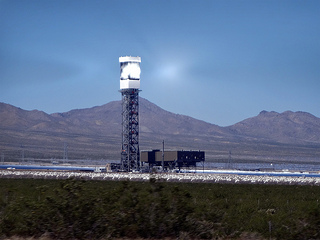 According to its
According to its 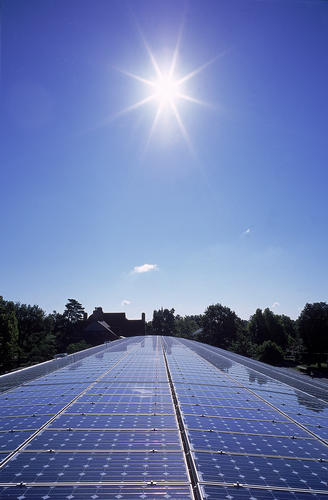 list of
list of 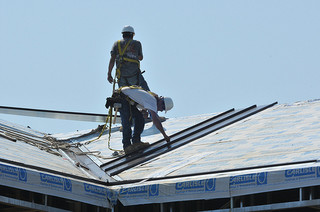
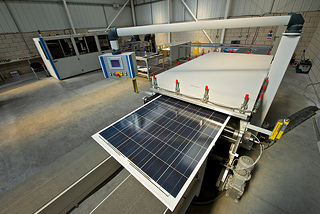


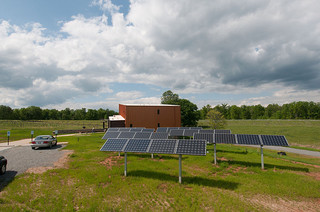
 Crypto-currency, on the other hand, is still a mystery to many of us, or at least I thought it was. Crypto-currency is a digital medium of exchange — a digital or virtual currency — that uses cryptography for security. Most people have heard of Bitcoin, the first crypto-currency to begin trading. Now there are numerous crypto-currencies available, often referred to as altcoins or alternative coins. On January 27, 2014, it was
Crypto-currency, on the other hand, is still a mystery to many of us, or at least I thought it was. Crypto-currency is a digital medium of exchange — a digital or virtual currency — that uses cryptography for security. Most people have heard of Bitcoin, the first crypto-currency to begin trading. Now there are numerous crypto-currencies available, often referred to as altcoins or alternative coins. On January 27, 2014, it was  Reportedly, Stanford civil and environmental engineering professor
Reportedly, Stanford civil and environmental engineering professor